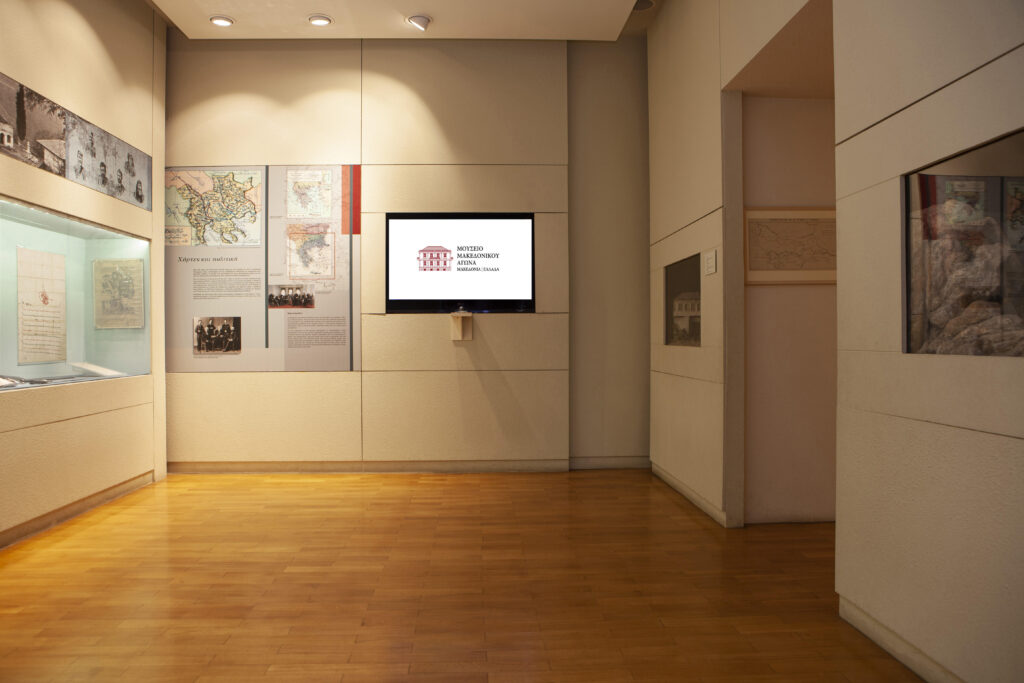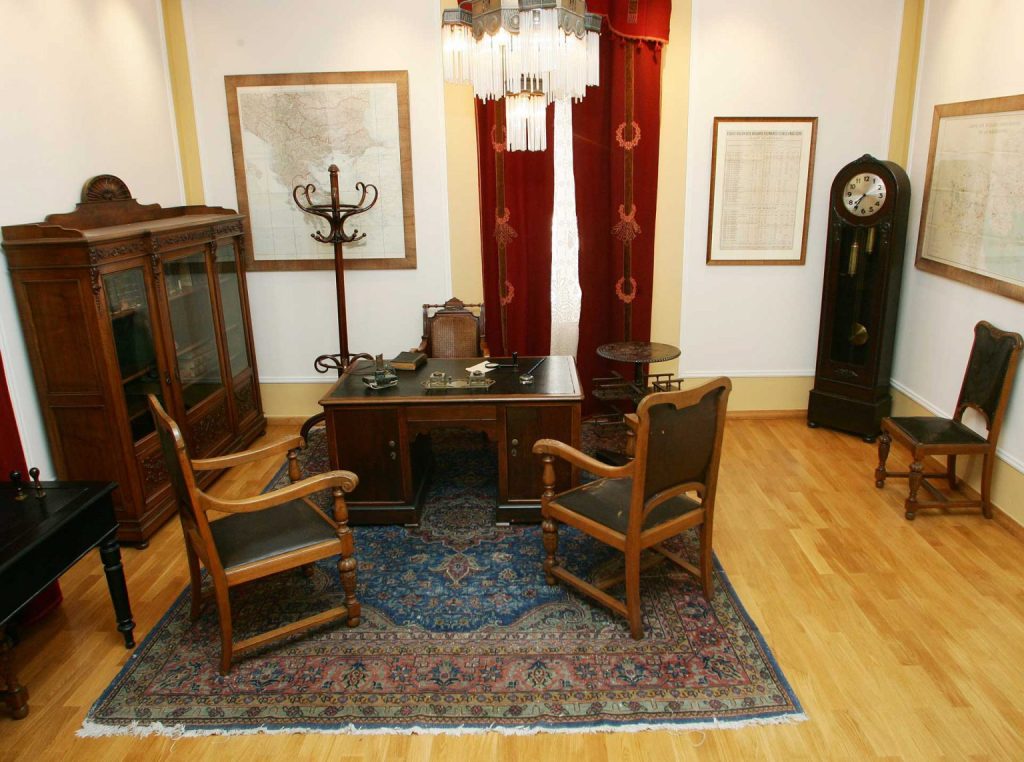After the Macedonian Struggle
Permanent Exhibition
From the end of the Balkan Wars to this day
Greece’s participation in World War I (1914-18), on the side of the Entente Powers, was a turning point in the history of Macedonia. The creation of the Macedonian Front by British and French troops (October 1915), with the encouragement of Prime Minister Eleftherios Venizelos, led to his expulsion by King Constantine, causing the National Schism and later (September 1916) leading to the formation of a separate Venizelist government in Thessaloniki. The allies’ intervention did not save Serbia. On the contrary, Bulgaria, on the side of the Central Powers, occupied (May 1916) and deserted Greek Eastern Macedonia. The presence of numerous troops, both allied and enemy, exacerbated the local problems. National propaganda flared up again. The future of Macedonia appeared ultimately undecided. The reunification of the Greek state (June 1917) and the reorganisation of the army gave a new impetus. At the battle of Skra (May 1918), three Greek divisions were distinguished. The front of the Central Powers collapsed after the Battle of Doiran and the opening of the Axios valley (September 1918). Through its participation in the war and the mutual exchange of populations with Bulgaria, Greece regained Macedonia, while it also acquired Western Thrace (1920). However, the memory of triumph quickly faded before the devastation of the Asia Minor Catastrophe (1922).
The Zeppelin
The so-called Allied Army of the Orient disembarked at the port of Thessaloniki in the autumn of 1915. German aircraft raids were frequent in Thessaloniki. Among the German bombings, operations using airships, known as Zeppelins, were particularly notable. These oversized blimps were named after their inventor, Count Ferdinand von Zeppelin. The first Luftschiff Zeppelin (LZ-1) flew on 2 July 1900. The “Z” series was referred to as “compact type with rigid frame”, because the airship’s balloon, filled with hydrogen, rested on an aluminium frame. Beneath the fuselage was a skiff for the crew, the engine room with internal combustion engines and the fuel. On 1 February 1916, the LZ-85 bombed the central market of Thessaloniki. In one of the subsequent bombings, on 1 March 1916, it completely destroyed the premises that housed the Bank of Thessaloniki (Banque de Salonique), on today’s Kountourioti Street. The Zeppelin’s third raid took place on the night of May 4th to May 5th, 1916. After many maneuvers by the pilot, the LZ-85 was finally located and shot down by the English battleship “Agamemnon”. The Zeppelin was engulfed in flames and fell into the swamps on the mouth of Axios River, in the region of Koulakia, today’s Chalastra. The first to arrive on the scene and find the wreckage was a group of Serbian soldiers. The Zeppelin’s twelve-member crew was rescued. A week later, they were sent by boat to France. The airship – in fact, its frame, since the fabric had been completely destroyed – was transported, assembled and exhibited in front of the White Tower. For several weeks, crowds gathered to admire the “monster” up close and take a piece of aluminium, a metal completely unknown at the time. Salvaged parts were sold to artisans, who made household utensils, jewellery and various souvenirs, sold for several months by local merchants.
Struggles for Liberation
Permanent Exhibition
The Consulate General of Greece in Thessaloniki
Permanent Exhibition
Characteristics of the Struggle
Permanent Exhibition




